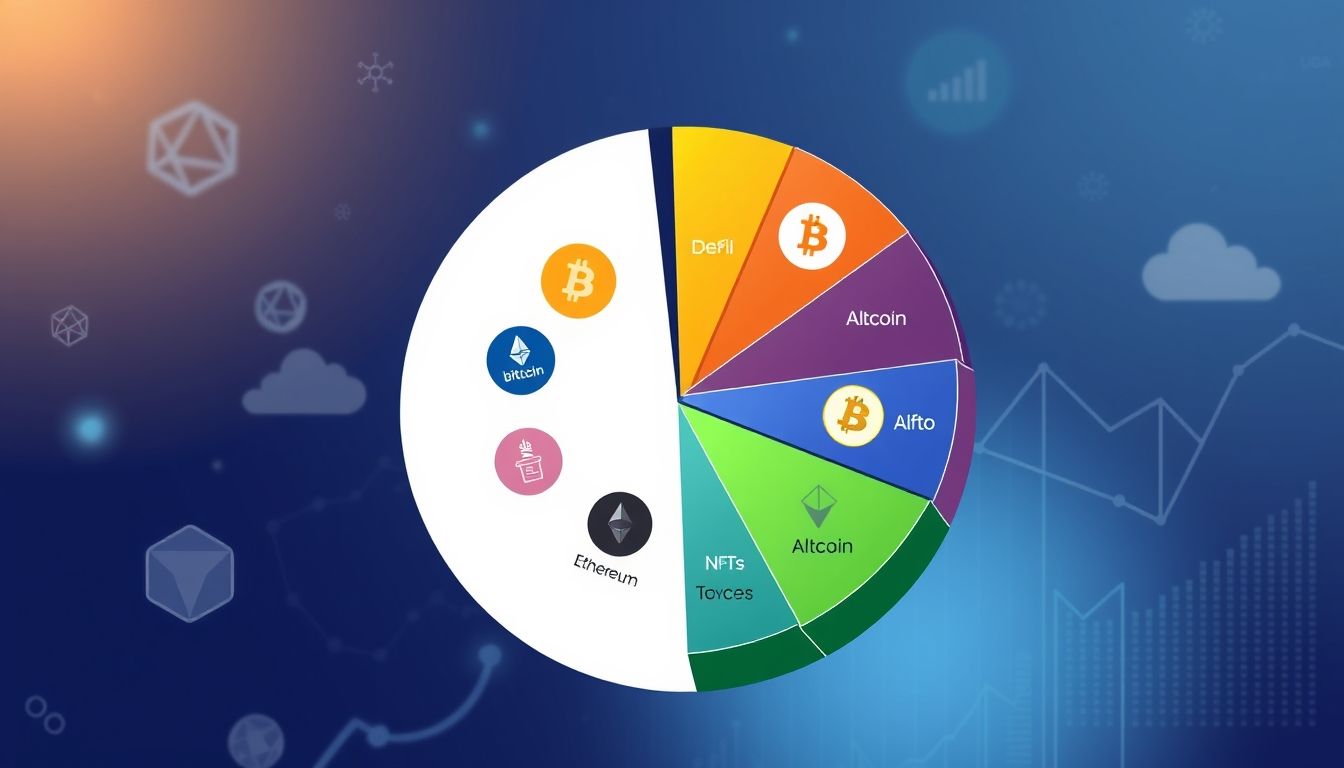Introduction: A New Dawn for the Decentralized Internet
The world is witnessing a radical transformation in how we interact with the internet, driven by technological advancements in the field of cryptocurrencies and Web 3.0 technologies. This shift, often referred to as the "decentralized internet," promises a fundamental change in power structures and control, and a redistribution of value among users and creators.
Chapter 1: What are Cryptocurrencies?
1.1 Definition of Cryptocurrencies
Cryptocurrencies are digital or virtual assets that rely on cryptography to secure transactions and control the creation of new units. Cryptocurrencies differ from traditional currencies (fiat currencies) issued by governments, as they operate independently of central banks.
1.2 Types of Cryptocurrencies
- Cryptocurrencies: Such as Bitcoin and Ethereum, rely on blockchain technology to record transactions securely and transparently.
- Stablecoins: Designed to maintain a stable value by pegging them to a stable asset such as the US dollar or gold.
- Central Bank Digital Currencies (CBDCs): Digital currencies issued and managed by central banks, aiming to provide a digital alternative to traditional paper currencies.
1.3 Examples from the Arab Market
Interest in cryptocurrencies is growing in the Arab region, with the emergence of local trading platforms and government initiatives to study the possibility of issuing national digital currencies. For example, some Gulf countries are exploring the use of blockchain technology to improve the efficiency of cross-border financial transactions.
Chapter 2: Web 3.0: The Decentralized Internet
2.1 Definition of Web 3.0
Web 3.0 is the next generation of the internet, which aims to create a decentralized, more intelligent, and transparent network. Web 3.0 relies on technologies such as blockchain, smart contracts, and artificial intelligence to empower users to control their data and digital assets.
2.2 Characteristics of Web 3.0
- Decentralization: Distributing power and control among users, and reducing reliance on large corporations.
- Transparency: Recording transactions and data on a public blockchain, increasing transparency and reliability.
- Security: Using encryption to protect data and transactions from hacking and manipulation.
- Ownership: Empowering users to own their data and digital assets, and control how they are used.
2.3 Applications of Web 3.0
Web 3.0 applications cover a wide range of fields, such as:
- Decentralized Finance (DeFi): Providing alternative financial services such as lending, borrowing, and trading, without the need for traditional intermediaries.
- Non-Fungible Tokens (NFTs): Enabling artists and creators to sell their digital artwork directly to consumers, and obtain guaranteed ownership rights.
- Decentralized Autonomous Organizations (DAOs): Organizations governed by coded rules on a blockchain, allowing members to make decisions collectively and transparently.
Chapter 3: The Relationship Between Cryptocurrencies and Web 3.0
Cryptocurrencies are a fundamental element in the structure of Web 3.0, providing a means of payment and financial transfers within the decentralized network. Cryptocurrencies are also used to incentivize participation and contribution to the development of Web 3.0 applications.
For example, cryptocurrencies can be used to pay transaction fees on a blockchain, or to reward users who contribute to the development of open-source projects.
Chapter 4: Benefits of the Decentralized Internet
- Increased Privacy and Security: Empowering users to control their personal data, and protect it from tracking and exploitation.
- Reduced Censorship and Control: Removing barriers imposed by governments and large corporations on access to information and freedom of expression.
- Enhanced Innovation and Competition: Facilitating the creation of new applications and services, and encouraging competition between companies.
- Empowering Users and Creators: Granting users and creators greater ownership rights over their data and works, and enabling them to earn fair profits.
Chapter 5: Challenges of the Decentralized Internet
- Regulation and Oversight: Difficulty in regulating cryptocurrencies and Web 3.0 applications, and preventing their use in illegal activities.
- Cybersecurity: The risk of cyberattacks and theft of cryptocurrencies and personal data.
- Scalability: Limited ability of some blockchain networks to process a large number of transactions simultaneously.
- User Interface: Difficulty in using some Web 3.0 applications for non-technical users.
Chapter 6: The Future of Cryptocurrencies and Web 3.0
Many experts predict that cryptocurrencies and Web 3.0 will play an increasingly important role in the global economy and the digital society. As these technologies continue to evolve, we may witness a radical transformation in how we interact with the internet and the world around us.
Estimates indicate that the cryptocurrency market will continue to grow significantly in the coming years, with increased adoption of cryptocurrencies by companies, financial institutions, and governments.
Chapter 7: How to Invest in Cryptocurrencies and Web 3.0?
Investing in cryptocurrencies and Web 3.0 involves high risks, but can yield rewarding returns if done correctly. Here are some tips:
- Do Your Research: Before investing in any cryptocurrency or Web 3.0 project, make sure you fully understand the technology and potential risks.
- Diversify Investments: Do not put all your money into a single cryptocurrency or project. Diversify your investment portfolio to reduce risk.
- Invest for the Long Term: Do not expect to make quick profits. Invest for the long term, and be prepared to withstand market fluctuations.
- Consult a Financial Advisor: Before making any investment decision, consult a financial advisor to obtain appropriate advice.
Chapter 8: Successful Examples in the Web 3.0 World
There are many successful examples of Web 3.0 projects that have achieved significant growth in recent years, such as:
- Decentraland: A decentralized virtual world that allows users to create, own, and trade land and digital assets.
- Uniswap: A decentralized exchange that allows users to trade cryptocurrencies without the need for an intermediary.
- Chainlink: A decentralized oracle network that provides reliable data for blockchain applications.
Chapter 9: Regulatory and Legal Challenges in the Arab Region
Cryptocurrencies and Web 3.0 face significant regulatory and legal challenges in the Arab region, where laws and regulations relating to these technologies vary from country to country. Some Arab countries prohibit the use of cryptocurrencies completely, while others allow them in a limited manner.
It is essential for Arab governments to develop clear laws and regulations to regulate cryptocurrencies and Web 3.0, and to encourage innovation in this field, while protecting investors and users from potential risks.
Chapter 10: Tips for Investors and Entrepreneurs in the Web 3.0 Field
- Stay Informed: Keep up to date with the latest developments in the field of cryptocurrencies and Web 3.0, and learn about new technologies and opportunities.
- Find a Supportive Community: Join online communities interested in Web 3.0, and connect with experts, investors, and other entrepreneurs.
- Be Prepared to Experiment and Fail: Web 3.0 is still in its early stages, so be prepared to experiment and fail, and learn from your mistakes.
- Focus on Solving Real Problems: Look for problems that can be solved using Web 3.0 technologies, and develop innovative and useful solutions.
Disclaimer: This article is for informational purposes only, and does not constitute financial advice. Investing in cryptocurrencies and Web 3.0 involves high risks, and you may lose your entire investment.




